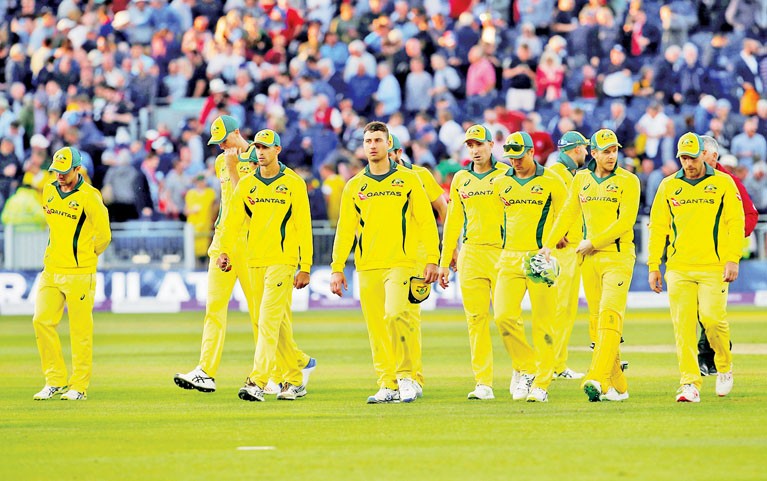
The Australians who dominated the game of cricket for over two decades and were number one less than two years back have slipped to the sixth position

In the ‘70s and ‘80s, West Indies ruled the cricket world. Their batting and bowling were equally strong that never allowed any team to come close to beating them. The captaincy of Clive Lloyd turned the Caribbean team into an unbeatable force.
The great era of Caribbean cricket began with the success in the first World Cup in 1975 and continued till mid-1980s.
In the 1987 World Cup, Allan Border-led young Australians surprised the world with an unexpected win. Since then the Australians have been the most successful in ODI cricket. They won five world cups, in 1987, 1999, 2003, 2007 and 2015. They were the runners-up in 1996.
Australia also won Champions Trophy in 2006 and 2009. The Kangaroos also set a record of 21 consecutive wins in ODIs in 2003.
But the team that dominated the game of cricket for over two decades and was number one less than two years back has slipped to the sixth position now.
The most consistent performers became mediocre, losing to South Africa (0-5) and New Zealand (0-2) in away series.
After the retirement of Ricky Ponting, Michael Clarke and Michael Hussey, this team has faced many defeats. Even Bangladesh defeated Australia in a Test match.
They came under further pressure when their captain and some other players were caught tampering the ball in South Africa earlier this year. Captain Steve Smith and senior batsman David Warner were banned for 12 months.
Now in England, Australia have lost the ODI series. The five-time world champions have lost 14 of their 16 completed ODIs including three successive bilateral series to New Zealand, India and England. They exited the Champions Trophy at the group stage last year.
In the third ODI at Trent Bridge, England smashed a record 481 against the inexperienced bowling attack of Australia.
The English batsmen bettered their own total of 444-3 made against Pakistan two years back at the same venue. A record 21 sixes and 41 fours were hit by England’s batsmen against the toothless Australian attack.
Australia’s Jhye Richardson gave away 92 in 10 overs, while medium-pacer Andrew Tye conceded 100 in nine overs.
The bowlers struggled for line and length even in favourable swing bowling conditions.
It was Australia’s heaviest defeat in ODI history, surpassing a 206-run loss to New Zealand in Adelaide in 1986.
Australia have now lost five ODI series in succession. It is the first time England have won back-to-back ODI series against Australia since 1986-87.
It is hard to believe that Australia have won only two of their last 16 ODIs against all opponents.
Australia badly missed their injured fast bowlers Mitchell Starc, Pat Cummins and Josh Hazlewood. They are no more the force they used to be in the last two decades. South Africa, India, England and Pakistan have improved their performance meanwhile.
A former Australian captain admitted that Australia were under pressure. "They need to try and work out what their team is going to be. They need to find a way and start to rebuild really quickly," he added.
"The current team needs to find out the solution as soon as possible. If India beat England in England in the upcoming Test series, they go to Australia with so much confidence that it is going to be really hard to beat them in Australia," he said.
Former Australian captain Ian Chappell says that in the absence of Smith and Warner this is going to be the best chance for India to win their maiden Test series in Australia.